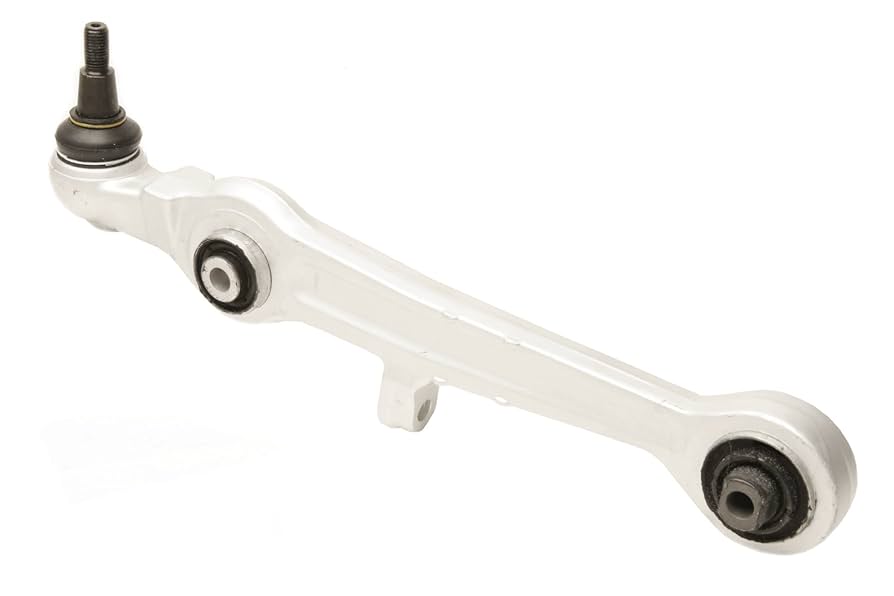
In the ever-evolving automotive landscape, aluminum control arms have emerged as a focal point for innovation. As manufacturers strive to balance performance, efficiency, and comfort, these components have become synonymous with advanced engineering. Let’s explore why aluminum control arms are reshaping vehicle design and the tangible benefits they offer.
The Surge of Aluminum in Suspension Technology
Over a century of automotive progress has shifted priorities from sheer performance to holistic excellence—including fuel economy and ride quality. Chassis components, particularly control arms, have become a key area of research. Aluminum alloy stands out for its ability to reduce unsprung mass¹, a critical factor in enhancing wheel response, fuel efficiency, and handling. While steel has long dominated, aluminum’s unique properties are driving a paradigm shift—though not without trade-offs. Let’s dissect its features, advantages, and future potential.
Core Requirements for Control Arms
Control arms are the backbone of a vehicle’s suspension, demanding precision in design and material selection. Engineers must prioritize:
- Mass Production: With 20 million annual vehicle sales globally, materials must allow high-volume manufacturing.
- Robustness: Resistance to deformation under stress, requiring optimal strength, hardness, and tensile properties.
- Longevity: A typical lifespan of 8+ years without functional degradation.
- Cost-Effectiveness: Balancing production expenses with market affordability.
- Manufacturing Feasibility: Streamlined processes to avoid cost spikes.
- Environmental Resistance: Durability in extreme conditions, including corrosion and chemical exposure.
Advantages of Aluminum Control Arms
While steel remains prevalent, aluminum alloy addresses two critical needs: weight reduction and enhanced comfort—reasons it’s favored in modern engineering.
1. Lightweight Engineering
Aluminum control arms excel in minimizing both overall vehicle weight and unsprung mass. The latter directly impacts wheel responsiveness, translating to:
- Improved Fuel Efficiency: Reduced energy consumption from lighter components.
- Sharper Handling: Quicker wheel adjustments for safer, more agile driving.
- Corrosion Resistance: Aluminum’s natural oxide layer offers superior protection versus steel.
2. Enhanced Passenger Comfort
Aluminum’s lower Young’s modulus (68 GPa vs. steel’s 200 GPa) gives it a softer, more compliant feel, absorbing road vibrations to elevate ride smoothness.
Aluminum vs. Steel: A Comparative Analysis
| Property | Steel | Aluminum |
|---|---|---|
| Density (g/cc) | 7.8 | 2.7 |
| Cost (USD/ton) | ~700 | ~2,500 |
| Young’s Modulus (GPa) | 200 | 68 |
| Yield Strength (MPa) | 350 | 270 (post-T6: >300) |
| Elongation (%) | 15 | 12 |
- Density: Aluminum is ~1/3 the weight of steel, a pivotal advantage for lightweight design.
- Cost: Aluminum’s price tag is ~4x higher, explaining its use in premium vehicles (e.g., BMW 7 Series, Mercedes S-Class).
- Strength: While raw aluminum yields less than steel, T6 heat treatment boosts its strength to 300+ MPa, approaching steel’s durability.
The Road Ahead for Aluminum Control Arms
Despite their advantages, aluminum control arms remain niche due to cost. However, the rise of electric vehicles (EVs) may accelerate their adoption. Heavy EV batteries demand weight savings, pushing manufacturers to embrace aluminum for its unsprung mass benefits. As technology evolves, expect broader integration—especially in premium and eco-conscious designs.
